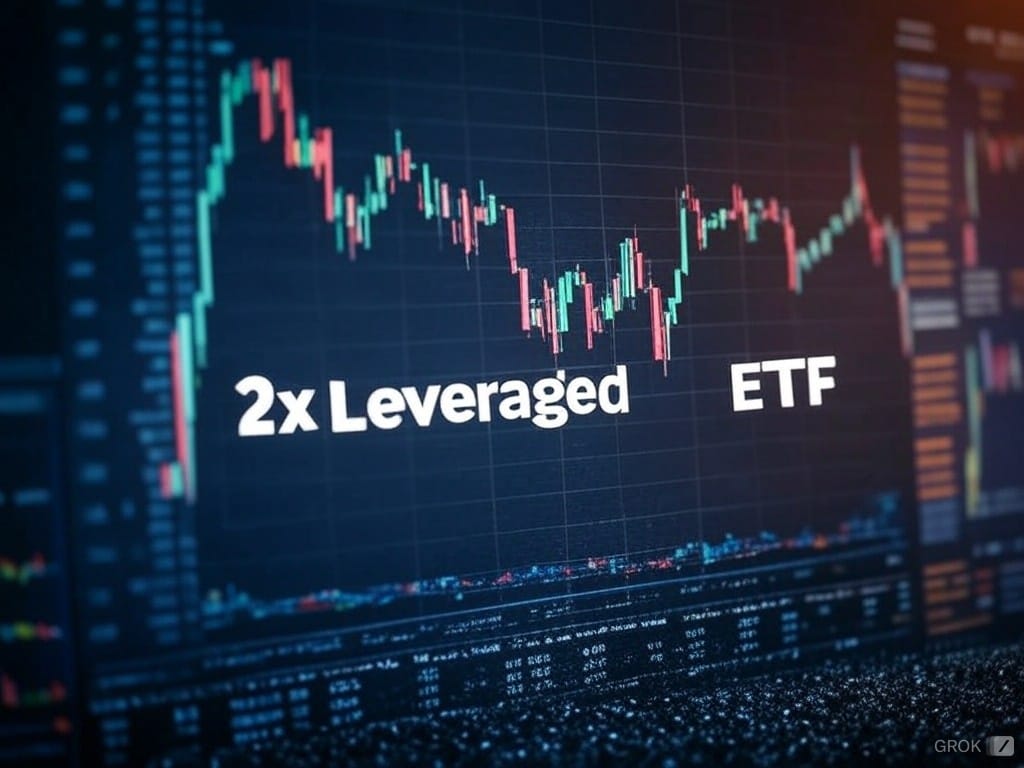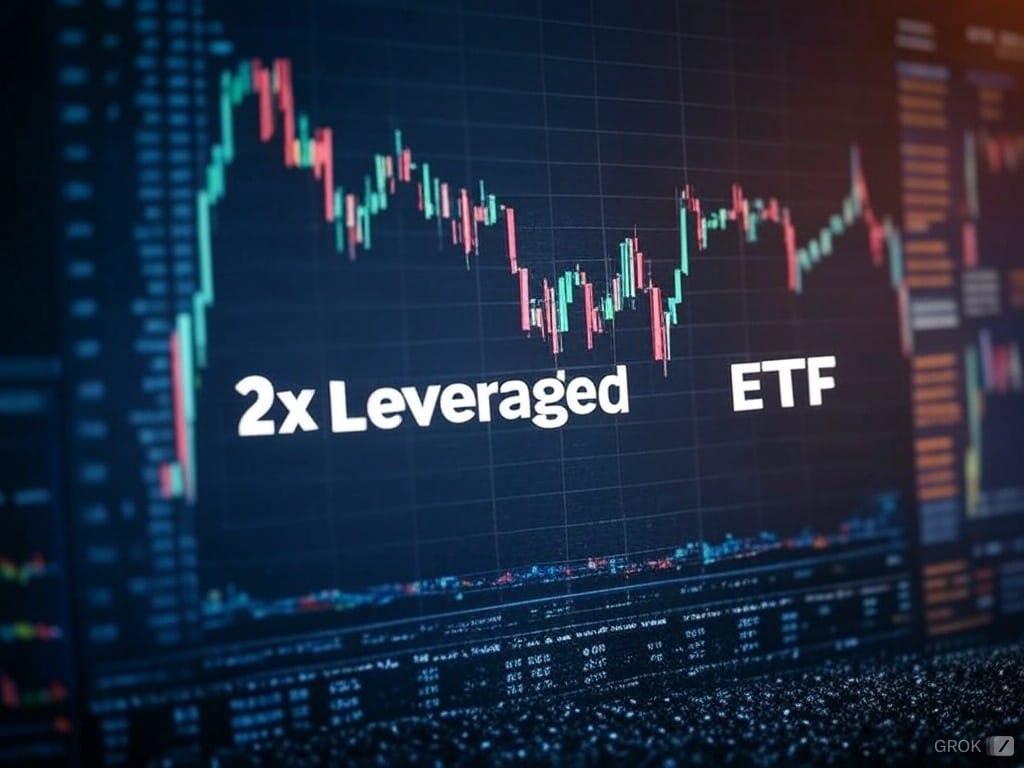Understanding 2x Leveraged ETFs: A Beginner's Guide

What are ETFs?
Before diving into leveraged ETFs, let's understand what an ETF (Exchange Traded Fund) is. An ETF is a type of investment fund that holds assets like stocks, bonds, or commodities and typically tracks an index. ETFs are traded on stock exchanges, much like individual stocks, making them accessible for regular investors.
What are Leveraged ETFs?
Leveraged ETFs aim to amplify the daily returns of an underlying index or asset. A 2x leveraged ETF, for instance, seeks to deliver twice the daily performance of its benchmark index. If the index goes up by 1%, the ETF should theoretically go up by 2%. Conversely, if the index drops by 1%, the ETF would aim to drop by 2%.
How Do 2x Leveraged ETFs Work?
Here's a simplified breakdown:
- Daily Reset: Leveraged ETFs are designed to achieve their leverage goal on a daily basis This daily rebalancing is crucial because:
- Compounding Effect: Over multiple days, the returns can deviate from simply doubling the index's performance due to daily resets and volatility. If an index goes up 1% one day and down 1% the next, a 2x leveraged ETF might not end flat but could lose value due to the compounding effect.
- Example: Suppose an index starts at 100:
- Day 1: Index up 1% to 101. The 2x ETF would aim for 2%, going from 100 to 102.
- Day 2: Index down 1% back to 100. The ETF, now from 102, drops by 2% to 99.96. Even though the index returned to its starting point, the ETF lost value.
- Use of Derivatives: To achieve this leverage, these ETFs use financial derivatives like futures contracts, options, or swap agreements. This allows them to magnify returns without needing to invest twice the amount in the actual assets.
- Risk Management: Managers of leveraged ETFs actively adjust their portfolios to maintain the 2x leverage, which involves complex strategies to manage risk and exposure.
Pros for Beginners:
- Amplified Returns: If you're betting on a short-term rise in an index or sector, 2x leveraged ETFs can offer higher potential gains.
- Accessibility: You can buy and sell these ETFs like any stock, without needing to engage in margin trading or other complex financial instruments.
Cons to Watch Out For:
- Volatility: Due to daily rebalancing, these ETFs can be much more volatile than their underlying indices over longer periods.
- Decay: Over time, particularly in volatile markets, the value of leveraged ETFs can decrease even if the underlying index remains stable or slightly increases. This is known as "volatility decay."
- Not for Long-Term Holding: They are generally not suitable for long-term investment due to the compounding effect of daily returns.
In Conclusion:
2x leveraged ETFs can be exciting for those looking to capitalize on short-term market movements but come with significant risks. They're best used by investors who understand:
- The implications of daily reset and compounding.
- The potential for amplified losses as well as gains.
- The need for active management and possibly frequent trading to manage positions.
As with any investment, education is key. If you're new to this, consider starting with simulations or virtual trading platforms to understand how these ETFs behave in real market conditions before committing real money. Remember, while the potential for higher returns exists, so does the potential for significant losses.
Listen to the Podcast






